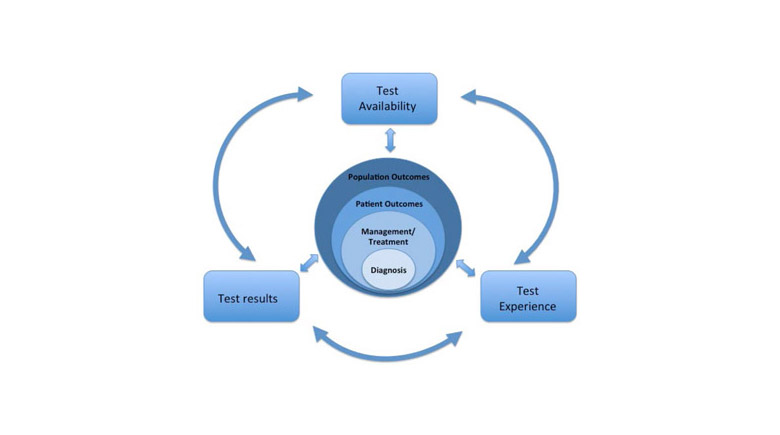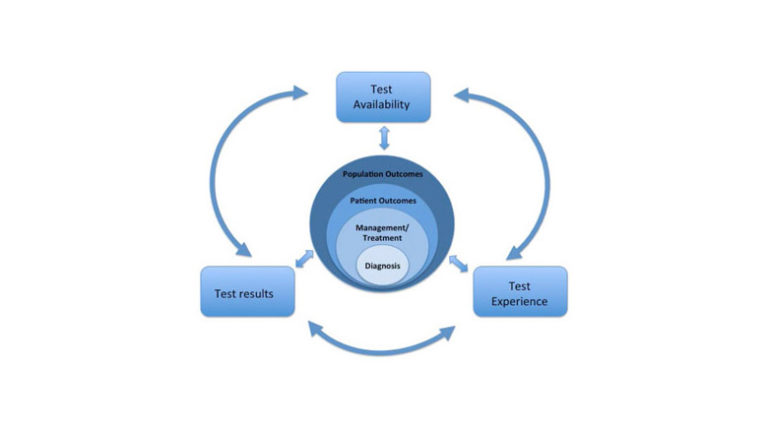
Current frameworks for evaluating diagnostic tests are constrained by a focus on diagnostic accuracy, and assume that all aspects of the testing process and test attributes are discrete and equally important. Determining the balance between the benefits and harms associated with new or existing tests has been overlooked. Yet, this is critically important information for stakeholders involved in developing, testing, and implementing tests. This is particularly important for point of care tests (POCTs) where tradeoffs exist between numerous aspects of the testing process and test attributes. We developed a new model that multiple stakeholders (e.g., clinicians, patients, researchers, test developers, industry, regulators, and health care funders) can use to visualize the multiple attributes of tests, the interactions that occur between these attributes, and their impacts on health outcomes. We use multiple examples to illustrate interactions between test attributes (test availability, test experience, and test results) and outcomes, including several POCTs. The model could be used to prioritize research and development efforts, and inform regulatory submissions for new diagnostics. It could potentially provide a way to incorporate the relative weights that various subgroups or clinical settings might place on different test attributes. Our model provides a novel way that multiple stakeholders can use to visualize test attributes, their interactions, and impacts on individual and population outcomes. We anticipate that this will facilitate more informed decision making around diagnostic tests.

